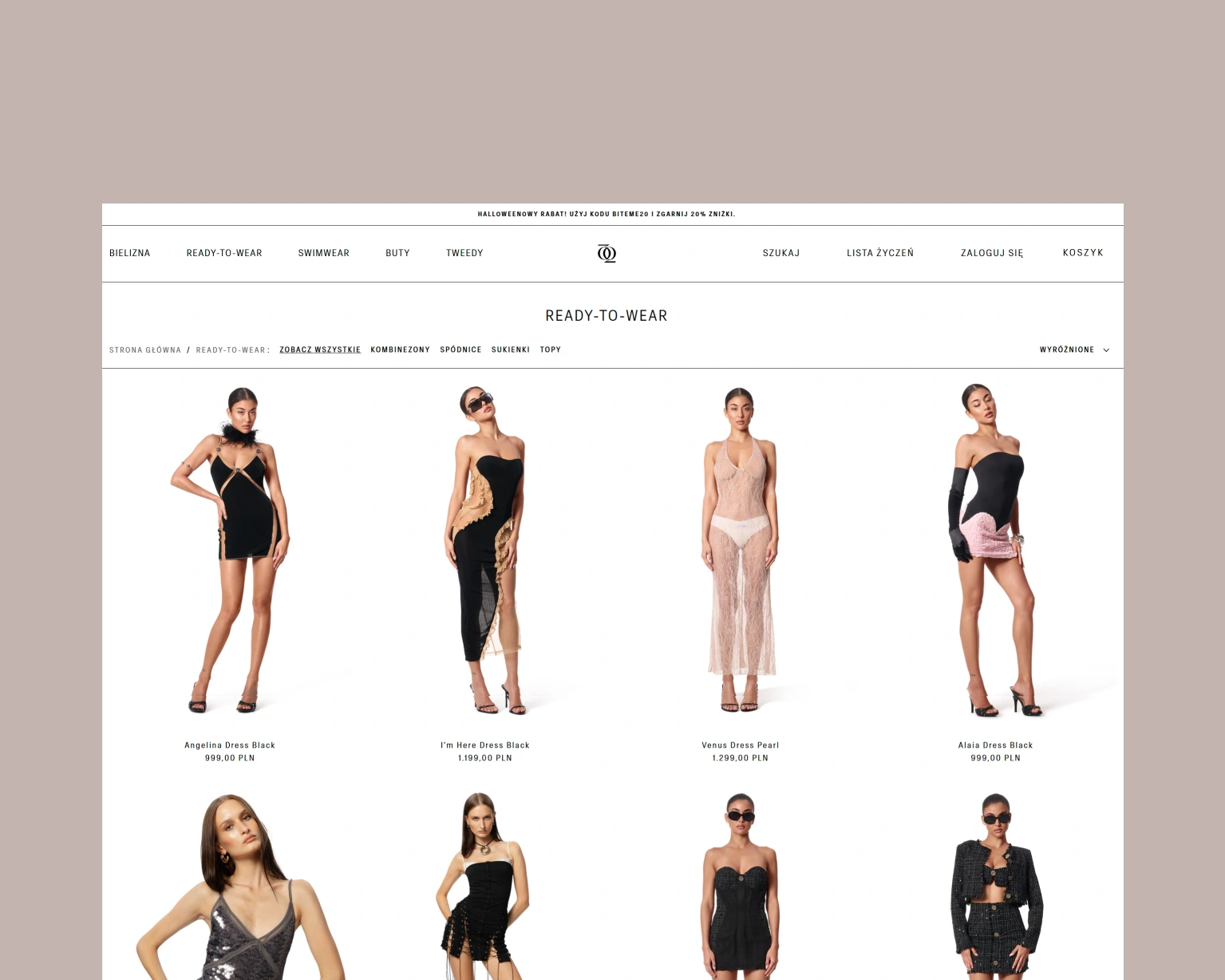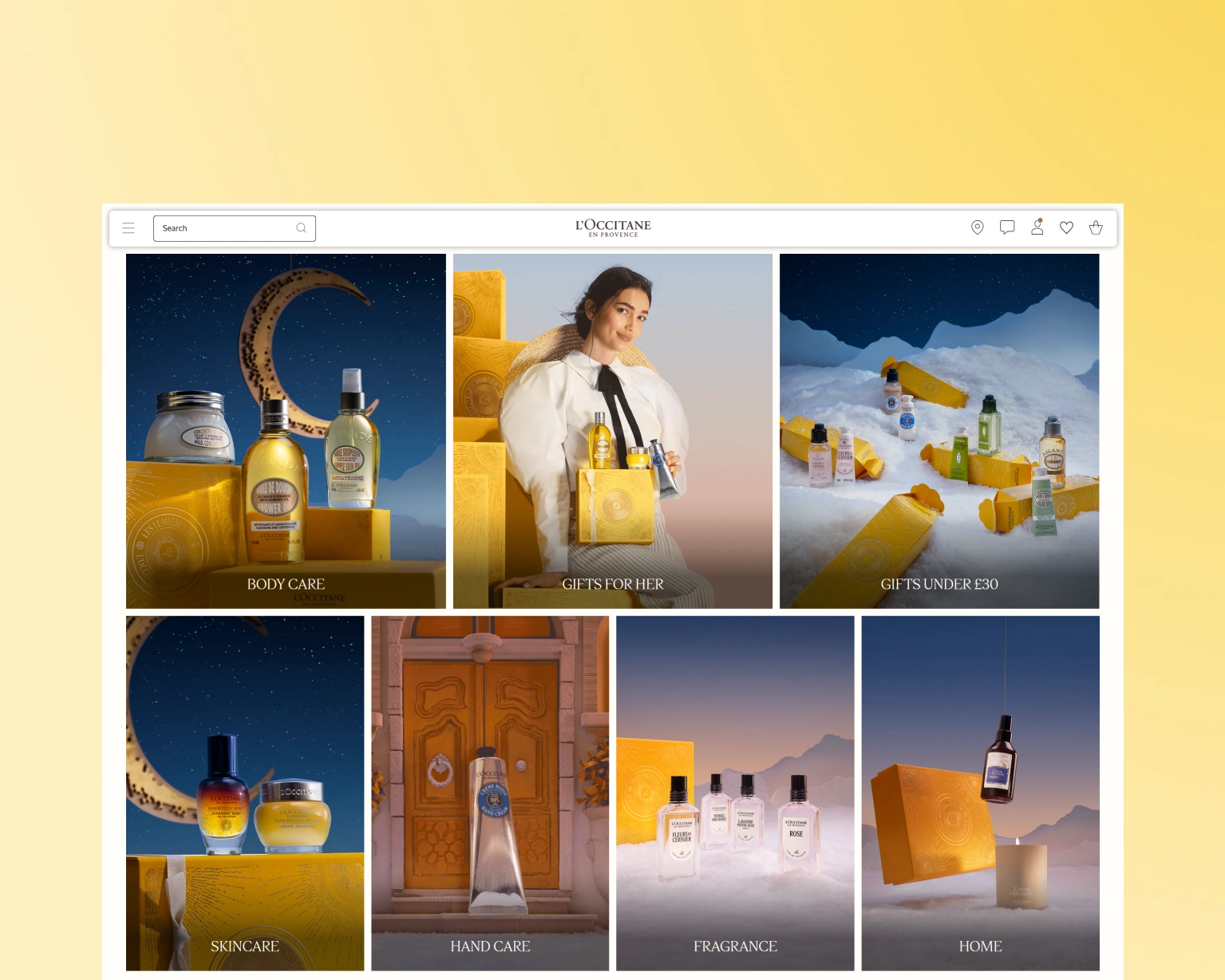Cursor Label

Shopify ERP Integrations
What do you need to succeed as an e-commerce brand? Good product, that’s one. Flawless customer support, that’s two. Knowing what exactly your customers expect from you is three. And smoothly managing all the internal aspects of your shop is four. But if the supply chain, sales department, and accounting all work in a silo, then getting lost on who is responsible for what is, unfortunately, a daily thing.
Book a meeting

They trusted us


















ERP is important for businesses because it automates many tasks that are time-consuming and error-prone.
It also collects data from different departments and stores it in one database that everyone can access. This way, employees can communicate and share information more easily across the organization.

Why do you need it?
01
Centralized Price Management
Easily manage and synchronize price lists across all your multiple Shopify stores and sales channels from one central ERP system.
02
Improved Data Accuracy
Automatically track, process, and sync data, drastically reducing the risk of manual errors and boosting the speed and reliability of your information.
03
Enhanced Customer Experience (CX)
Automate communication with customers, such as sending real-time notifications about order payments, packing status, and shipping readiness.
04
Advanced Inventory & Forecasting
Utilize integrated inventory management and forecasting features to accurately predict supply needs and ensure you always have stock available.
05
Task Automation
Streamline daily operations by automating tasks like inventory level updates, financial tracking, monthly report generation, and customer notifications.
06
Flexible Cloud Access
If using a cloud-based ERP, manage and monitor your entire business data stack from any device or location, offering full remote flexibility.

Why is it worth to work with us?
Experience
200+
Relised Shopify projects
Team
50+
Shopfiy Experts in the team
"Their professionalism, commitment, and flexibility made the migration to Shopify Plus and the development of the platform smooth and seamless."
Daria Żornaczuk
E-commerce Specialist

Tailored services
for your Business
We know Shopify like the back of our hands. We can clearly assess the time and resources that you need to deliver you the result you want.

Our Shopify Plus Development Case Studies
If you, as a merchant, have multiple Shopify stores under your name, then not getting lost in the chaos is even trickier. This is where ecommerce brands but not only use an ERP system to turn chaos into order and ensure everyone is on the same page.
However, picking a Shopify ERP integration platform and adding it to the store isn’t as simple as it might seem – there are plenty of things you need to research first and a couple of challenges to face. In this guide, we’ll help you with all that – we’ll show you the basics of Shopify ERP integrations, the benefits of having one in the shop, and how to ensure that it fits like a glove with Shopify.
What is an ERP?
ERP, or enterprise resource planning, is a software that helps businesses run their daily operations. It covers areas like accounting, communication, project management, compliance, and supply chain. It also includes performance management software, which helps businesses plan, budget, predict, and report on their financial results.
ERP is like the glue that connects the different systems and departments in a large business. It makes the business more efficient and productive.
What is a Shopify ERP Integration?
ERP integration is a way to connect and synchronize your enterprise resource planning software with other applications and data sources used in your company. This creates a single database with all the data, providing a unified view of information from various systems and departments in real-time. It also allows you to update data across all systems simultaneously.
The benefits of integrating ERP include streamlining operations, improving productivity, and enhancing communication and collaboration within teams. With all the data in one place, everyone has access to the same information and can easily share it with others, resulting in improved communication and collaboration between different teams.
What are the types of ERP integrations?
An ERP app can simplify your ecommerce business, but finding and integrating one with Shopify can be challenging. You have to choose from hundreds of ERP systems with different features and functions. Some are ecommerce-specific, some are CRM-focused, some offer BI or HR tools, and some are general-purpose. You need to identify your goals and needs, and look for an ERP that meets them. You also need to decide how to integrate Shopify with the ERP. By comparing options and consulting your team, you can reduce the risk of integration failure.
There are different ways to connect your Shopify store with an ERP system. You can choose from:
Custom ERP integration:
A custom app made for your business by developers. You can use this if you need to link some apps that are not supported by the ERP.
Native ERP integration:
A ready-made integration that lets you connect some apps to the ERP right away. This is easy and fast, but the number of apps you can add is limited.
Third-party integrator apps:
Apps made by other companies that help you link your apps to the ERP. They can work with different platforms or systems, but you need to check their security level.
Cloud Integration solution (iPaaS):
A cloud service that lets you connect your apps to the ERP without installing anything. This is also convenient, but you need to trust the cloud provider.
The best solution for your brand depends on your goals and needs. Native ERP integration is the simplest, but not very flexible. Third-party integrator apps or iPaaS solutions can offer more options, but they may have security risks. Custom ERP integration is the most tailored, but it takes more time and money.
How Shopify ERP integration can help you achieve more goals?
An ERP REPORT by Panorama Consulting Solutions shows that in 2020, 35% of businesses moved from their legacy systems into a more modern enterprise resource planning solution. Why? Legacy systems simply started to fall short in modern times where processing large amounts of data and having access to real-time data is basically a matter of business survival. And when it comes to enhancing the customer experience or optimizing a supply chain, real-time visibility and accurate information are essential.
In the same research, 61% of organizations said that they noticed the benefits of the ERP system after implementing it. Which ones? Let’s look at some of the biggest benefits that come with it.
1. Enhanced productivity
The top reasons companies decide to implement an ERP are increasing efficiency (35%) and reducing costs (29%). And a visible boost in employee productivity is one of the biggest benefits of such a solution.
Since it can easily take over most of your team’s mundane tasks daily (like updating the data inside the systems, tracking metrics, or creating reports), they have far more time to focus on more complex tasks. Having accurate data from all departments available at a glance also makes their work far easier, as they don’t have to spend time adding the data themselves or asking other departments about the order status, for example.
An extra benefit is that the app can work 24/7 without breaks, so it can also process data coming when the business is closed. Therefore, the staff won’t have to waste time in the morning sorting and processing data that came the previous day – everything will be already organized and processed for them.
2. Superior customer experience
ERP solutions can also help significantly improve your customers’ experience at the store. We all know that customer demands are only growing now – and ERP might be exactly what you need to meet or even exceed their expectations.
For example, when the customer service and sales teams have quick access to the customer data they need at the moment, they can go straight to handling customer complaints or problems and answer all their questions. They can also process and send orders much faster by automating some sales order processing tasks.
What’s more, you can create automatic notifications for when your inventory drops below a certain threshold. That way, you can order supplies before you run out of them and keep a steady number of items in the warehouse – that might be especially useful during a peak sales period.
3. Cost-effectiveness
By improving operational efficiency, an enterprise resource planning can also help your organization cut costs while increasing profitability across all departments, from manufacturing to finance. Based on G2 research, a properly implemented ERP can reduce operational costs by 23% and administrative expenses by 22%.
Once you have all of your apps used in the company put together, you as the store owner will be able to monitor what’s happening at every single of the stores and then make better decisions at a given moment. For example, by tracking the inventory status 24/7, you’ll know exactly what supplies you should order and which are sitting in the warehouse unused – preventing overspending. That gives you full cost and sales transparency around your entire store (or multiple stores).
But by automating repetitive tasks, such as drafting reports, handling payrolls or invoices, or passing data between multiple applications, you’re also saving your team’s time, which they can then use for more urgent tasks.
As a cherry on top, automating many basic, tedious tasks between the ERP and Shopify operations will also help eliminate costly mistakes and keep track of any potential problems before they even happen. All those things will visibly cut your operational costs in the long run.
4. Data security
Around 27% of business respondents are worried about a security breach when adopting an ERP solution. This is especially true if they are considering a cloud solution that appears incredibly useful on the one hand but could be dangerous on the other, looking at the number of hacking attacks that happen every day.
Storing all the essential data in one place when cyberattacks are on the rise might not sound like the best idea after all, especially when you have plenty of customer personal information. However, an ERP system does come with a few features that can make sure that your Shopify store data is secure.
One, you have full control over who has access to the information in the database and can edit the authorization settings at any time. As the data (and all changes to it) is fully visible to all employees, that also makes it harder for anyone to try and manipulate the data in secret.
Most ERP solutions can also automatically back up data and store it in an encrypted cloud database. So if you lose access to the business data at any point, you can recover it almost immediately from the backup – but for hackers, the encrypted data will be useless.
5. Better inventory and warehouse management.
Tracking and monitoring inventory is a challenge, especially if you have several stores or a large number of orders. And if you have several scattered warehouses as well, then inventory management can turn into a nightmare.
For an ERP platform, though, keeping an eye on the warehouse and supply chains 24/7 isn’t the slightest problem as they can track all items using serial numbers or RFID tags – even those that are still at the manufacturer site or in transit.
And besides the number of items or supplies you have, an ERP can also give you highly accurate data on customer demand, shipping and storage costs, any issues during manufacturing or shipping, and even alarm you of overstock and understock.
Who can benefit from Shopify ERP integration?
ERP integration is a powerful tool for Shopify users of any size. It helps you manage your data from multiple sources and platforms in one place. ERP software can also improe your inventory management, supply chain, and team collaboration.
If you are facing any of these challenges, you might need an ERP solution:
- You have too many spreadsheets, software, and apps to handle.
- You can’t track your inventory or supply chain accurately.
- You have poor communication and data exchange between teams.
- You waste time on manual data entry, reporting, and metrics.
- You don’t have a clear view of your projects or processes.
- You have incompatible data types and formats across departments.
While there’s no hard-and-fast rule on when exactly your ecommerce business should move, if you noticed that your team is struggling with most of the points above, then ERP might be a solution to all of them. While the implementation method your business chooses might come with some challenges to overcome (more on those in a moment), you can get the money spent quickly in the form of far smoother business processes, maximized workflow efficiency, and far happier staff (and customers) as well.
What ERP systems integrate with Shopify?
Now, which of the many business platforms can you use together with Shopify? There are a couple of options for you to consider.
One option is to go for the Shopify Global ERP program, available to both regular and Shopify Plus users. With the program, merchants can now access some of the leading ERP platforms like Netsuite, Brightpearl, and Acumatica ERP directly from the Shopify app marketplace. Soon, Microsoft Dynamics 365 will also be available to download there.
Another way is to browse websites such as Capterra or G2 to pick the most suitable solution for your store that also has an ecommerce ERP integration. But with Capterra having over 1400 ERP software reviewed on their website, how can you pick the right one and not end in the “ERP failure rate” statistics?
How to choose the best shopify erp for integration?
Choosing the best Shopify ERP for integration depends on several factors, such as your business size, budget, goals, and needs. Some of the things you should consider when comparing different Shopify ERP solutions are:
The common challenges of Shopify ERP integration and how to overcome them
- The features and functionalities of the ERP system, such as inventory management, order fulfillment, accounting, reporting, etc.
- The compatibility and integration of the ERP system with Shopify and other platforms or apps you use, such as payment gateways, shipping providers, marketing tools, etc.
- The ease of use and customization of the ERP system, such as user interface, dashboard, workflow, automation, etc.
- The scalability and reliability of the ERP system, such as performance, security, backup, support, updates, etc.
- The cost and value of the ERP system, such as pricing plans, fees, ROI, etc.
By evaluating these aspects, you can narrow down your options and find the best Shopify ERP for integration that suits your business needs and goals.
For all the incredible benefits an ERP tool can give you, there are a few other equally essential statistics that could give you second thoughts. Namely, ERP failure rates, actual cost, and time involved.
According to Netsuite research, 50% of ERP implementations fail the first time around, cost three to four times more than initially planned, and also take 30% more time than estimated. Why?
Here are a couple of problems brands often come across when implementing an enterprise resource planning platform:
- Lack of or inadequate planning: Shopify ERP integration can solve an array of problems, but first, you need to know what exactly you want from it, what features you will need, and what application you want to connect to it. The success or failure of the implementation will depend on this stage, so you shouldn’t rush here. Spend time talking with your managers and team members about it, it’s a good moment to plan an ERP training for the team later too. If you are in doubt, then sharing your requirements with the vendor or development company is always a good idea.
- Reluctance to use the solution: With how much time your team spent during tasks manually or using other apps, they might be pretty hesitant to switch to an ERP. And if the majority of the employees do not understand how to use the new tool, they won’t use it. However, if you show them practical benefits of using the platform (such as easy access to all data or automating business processes that were taking a good part of the day) and how to use the tool daily, they are far more likely to accept it.
- Going over the budget: Many businesses underestimate the cost of the ERP in the long run. For example, system modifications needed to improve usability cause overspending 65% of the time. But adding multiple customizations to the platform or not budgeting for training, maintenance or updates can quickly rack in the cost as well.
- Poor data quality: As ERP relies on the data it has inside the database, having inaccurate, corrupt, or outdated information can cause the platform to give wrong suggestions or run processes incorrectly. Before transferring data into the solution, it must be cleaned of errors and updated. If you haven’t done it earlier, this is also the right moment to set standardized rules for entering data.
- Picking a platform without a long-term plan: If you choose a platform without thinking about what features or integrations you might need in the future, the ERP might quickly become obsolete, or you might need additional apps to cover the extra features.
How to integrate Shopify with ERP?
To integrate your Shopify store with an ERP platform, you can use different methods. If you choose a native integration, you can install the connector apps from the Shopify marketplace and then sync your data with the app. A Shopify-certified partner or an ERP implementation team will assist you with the rest of the setup.
If you need a custom integration or have a lot of data to transfer, you should hire a Shopify development partner. They can help you select the best ERP platform for your needs, implement it, and provide ongoing support.
Conclusion
Moving to an ERP and integrating it with your regular Shopify or Shopify Plus store might seem like a big and risky decision to make. But you’ll see the benefits in no time. Thanks to the Shopify ERP integrations, you can both save time and money while also making the business run smoother than ever. You should also quickly notice that several key tasks will become significantly more efficient, thanks to automated stock updates, shared databases, business forecasting, and more. That will also boost your Shopify sales to a higher level without increasing the teams’ responsibilities and workload.
But to ensure a successful implementation, you need to carefully think about what you expect from a Shopify ERP system and how your brand plans to use it in the future. Asking a development company like us to assist you to manage all the technical aspects can also help you rest assured the new enterprise resource planning will work exactly as you expect it and supercharge your Shopify store.
Frequently Asked Questions
We delivered results for many types of Shopify brands. We have gained a deeper understanding of Shopify's challenges. Our experience makes us excellent project managers who can clearly see what lies ahead.
01
Does a company need Shopify integration with ERP?
That depends. If you are just starting a Shopify business and only have one store to manage, then using spreadsheets might be enough for now. But if your brand is growing and you start to have problems managing all the data inside the store, then it might be the right time to look for a ERP Shopify app.
02
What problems can you face in the Shopify ERP integration process?
Oh yes, plenty of those. Properly handling the Shopify ERP integration is actually pretty tricky to do, as many businesses like HP or Nike have found out. The biggest one might be with moving your data. You need to be very careful when transferring the data from the store to the platform, as the ERP solution might give you incorrect suggestions if the data is faulty or outdated. Making sure your team knows how to use the new tool is crucial too, as otherwise, they might be hesitant to use it. ERP Integration Shopify app can be incredibly useful but first, you need to thoroughly clean your data and then the app needs to be carefully installed – unless you have people familiar with integrating ERP with other tools, it’s best to leave that to Shopify development companies.
03
Pairing ERP and customer relationship management - why is it important?
Pairing ERP and customer relationship management (CRM) is important because it allows you to streamline your business processes and improve your customer satisfaction. ERP and CRM systems can share data and automate workflows, reducing errors and saving time. By integrating ERP and CRM, you can have a unified view of your customers, products, orders, invoices, and more. This can help you optimize your sales, marketing, and service strategies, as well as enhance your customer loyalty and retention.




